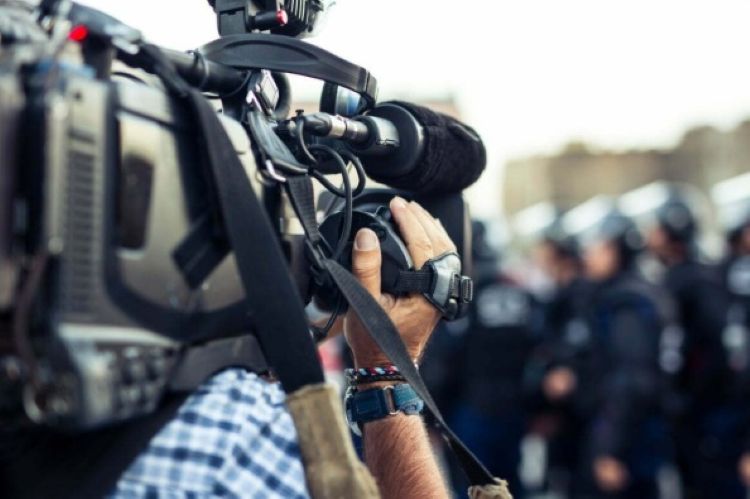
Not too long ago, the Indian editor stood as the custodian of the citizen’s right to know—an indispensable institution in our democratic architecture. The editor commanded respect for intellect, instilled fear through unwavering integrity, and earned the trust of the reader through an allegiance to truth. Today, that institution is in retreat, if not already in terminal decline. For years, the erosion of editorial authority and the slow collapse of media credibility were subjects of guarded conversation—in newsrooms, boardrooms, and drawing rooms. The recent India-Pakistan conflict cast a blinding light on what many had long feared: the transformation of Indian media from a guardian of democracy into a willing instrument of power.
The television coverage of the conflict wasn’t reportage—it was theatre. Prime-time debates turned into shouting matches. Newsrooms abandoned facts for frenzy. Anchors behaved like generals, issuing war cries instead of asking questions. The editorial voice of reason was sadly missing. The crisis exposed the decadence that has crept into Indian media institutions, and an absolute abdication of editorial responsibility.
The print media, which once prided itself on sobriety and balance, did not cover itself in glory either. Leading newspapers, rather than questioning the information handed to them, chose to replicate it without interrogation. Their front pages became indistinguishable from official handouts. They neither examined the legitimacy of claims nor analysed the broader strategic calculus. The watchdog, it appears, has been content being the town crier—dutifully amplifying what the state wants heard, without the inconvenience of fact-checking or analysis.
The digital media ecosystem fared worse. With few editorial filters and even fewer ethical guardrails, online platforms became echo chambers of outrage, rumour, and opinion masquerading as fact. The rise of “content writer”—often untrained, underpaid, and uninformed—has further diluted journalistic standards. Editors with no newsroom lineage now preside over clickbait operations, prioritising traffic over truth and monetisation over merit. In the absence of professional rigor or institutional memory, these platforms amplified what the loudest voices say, not what the public most needs to know.
READ I India-Pakistan conflict is a trap, New Delhi must sidestep it
Liberalisation and the corporate coup
The decline in the quality of Indian media did not begin with the advent of television or the explosion of digital platforms; its seeds were sown much earlier. From the very beginning, the Indian press operated in a paradox—free in theory, but often compromised in practice. In the early decades after Independence, while a few newspapers held fast to editorial integrity, many others relied heavily on government patronage for survival.
The Emergency of 1975 exposed the fragility of this arrangement, when much of the press, instead of resisting censorship, chose voluntary compliance. Liberalisation in the 1990s brought a different kind of vulnerability: the subordination of editorial priorities to market imperatives. As media houses expanded into conglomerates, the pursuit of ratings and revenue overtook the pursuit of public interest.

Successive generations of journalists were trained not in the rigour of reportage, but in the expediencies of access and speed. What we now witness is not a sudden collapse, but the logical culmination of decades of institutional neglect, editorial marginalisation, and the steady erosion of journalistic standards.
As media houses transition from public-spirited institutions to profit-driven conglomerates, the editor is being replaced by the marketing executive. Newsrooms are serving advertisers, not audiences. The sidelining of independent editors in favour of pliant managers has led to editorial teams being overrun by the interests of proprietors, political funders, and corporate patrons. Today, “difficult journalists”—one who might question the management or reject planted stories—are seen as liabilities. What we now have are news managers, not journalists.
TRPs and click-rates are the new holy grail. Even broadsheet dailies are not immune. The pursuit of “virality” now shapes headlines more than any editorial consideration. Investigative stories have given way to orchestrated leaks; truth is often sacrificed at the altar of relevance.
Politics in the studio, journalism in retreat
The political capture of Indian media is no secret. From the Emergency-era censorship to today’s soft co-option, governments have handles to tame the fourth estate. The difference now is the subtlety. Instead of banning articles, the state uses ad budgets and access to steer coverage. This form of pressure is often invisible but highly effective. The media’s increasing dependence on government advertising, particularly in Tier-II and Tier-III cities, has transformed it from a watchdog into a lapdog.

What does this mean in practice? During conflicts, the media parrots the official line. During elections, it demonises opposition voices. During social unrest, it amplifies division. The media’s shift from being a countervailing force to an amplifier of the state’s message is perhaps the most significant institutional failure of our times.
The myth of objectivity
If one thing has become clear, it is this: objectivity in Indian media is a myth. Take the case of the 26/11 coverage, when Indian TV networks revealed the positions of our forces live on air—an act that compromised national security. Or the coverage of the Doklam standoff, where the media ran with the story of “ten days of ammunition” without any verification. These were not mere lapses; they were symptoms of a deeper malaise—reckless reporting driven by the absence of editorial gatekeeping.
The recent conflict was no different. Rather than informing citizens, the media inflamed them. Channels ran war graphics, countdown clocks, and armchair military analysis while conveniently avoiding questions about preparedness, intelligence failure, or diplomatic consequences.
When journalism becomes PR
The rise of paid news is another corrosive trend. Multiple parliamentary reports have recorded the practice of accepting payment in exchange for positive coverage. What was once whispered about is now brazen. From fixing interviews to planting stories, journalists are increasingly seen as fixers or middlemen.
The infamous Radia tapes, in which prominent journalists were caught lobbying for political leaders and businesses, destroyed what little public trust remained. When media becomes a tool of lobbying and not of truth-telling, what hope remains? It is not just journalists but the owners who have failed the press. Once defenders of editorial independence, they now act as its executioners. In their desperation for political patronage or corporate tie-ups, many proprietors have sacrificed the legacy of their institutions.
By prioritising business interests over public interest, they are not just killing credibility—they are also killing relevance. One must ask: in an age when readers get better analysis on YouTube than in newspapers, what is the future of legacy media?
The future of Indian media
The battle to restore editorial integrity is not entirely lost, but the path forward demands clarity of purpose and institutional resolve. First and foremost, media organisations must reinstate editorial autonomy. Editors should no longer be treated as mere functionaries but must be empowered to exercise independent judgment, free from the whims of proprietors or the pressures of political power.
Without such insulation, the newsroom remains vulnerable to manipulation. Alongside this, there is a pressing need to overhaul the prevailing revenue models that tether media to advertiser interests. A shift towards subscription-driven, reader-funded journalism may offer a more sustainable and ethically sound path—one where credibility, not controversy, drives coverage.
The legal framework must also be strengthened to offer real protection for journalists. India’s sedition and defamation laws have long been misused to intimidate critical voices; without legal reform, even the bravest editors will hesitate before challenging power. Equally vital is the need to revive journalistic training and ethics.
Newsrooms must invest in building the next generation of reporters who understand the gravity of their role and the standards it demands—not just how to trend on social media. Finally, the onus is not solely on the media industry. Audiences, too, bear responsibility. Citizens must learn to support quality journalism, question sensationalism, and reject those who treat news as theatre. Only then can Indian media begin the long journey back to credibility.
A healthy media cannot exist in the absence of a functioning democracy, just as a democracy cannot thrive without an independent and credible media. The press is not merely an observer of democratic processes; it is an active participant in shaping public discourse, holding power to account, and safeguarding institutional integrity.
Where democratic institutions are weak, the media becomes vulnerable—co-opted, compromised, or coerced. Conversely, when the media abdicates its role, it weakens the very foundations of democracy by denying citizens the information and scrutiny that are essential to informed consent. The crisis facing Indian journalism, therefore, is not a sectoral issue—it is a constitutional one.
To continue calling media the fourth pillar of democracy is an empty gesture unless we restore its foundations. The real question is not whether Indian media can regain its credibility—it is whether India, as a democracy, can afford to have a media that does not.
When editorial judgment is extinguished, what remains is not a free press but an echo chamber—one unworthy of a constitutional democracy.
